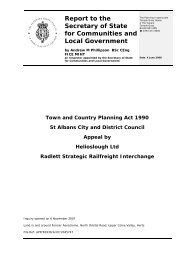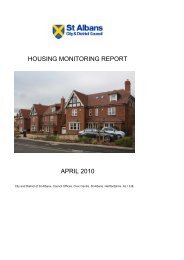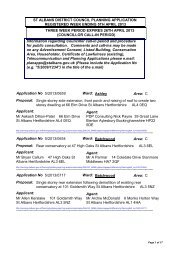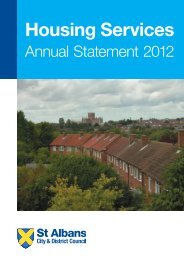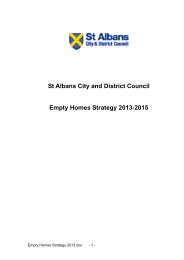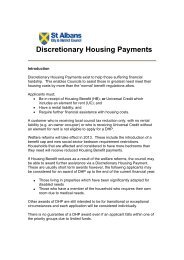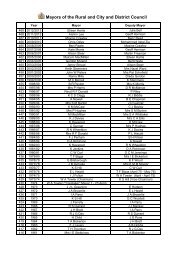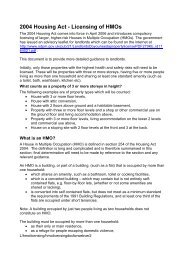RSS East Of England Plan - Broads Authority
RSS East Of England Plan - Broads Authority
RSS East Of England Plan - Broads Authority
You also want an ePaper? Increase the reach of your titles
YUMPU automatically turns print PDFs into web optimized ePapers that Google loves.
<strong>East</strong> of <strong>England</strong> <strong>Plan</strong> 63<br />
there is an opportunity for the <strong>East</strong> of <strong>England</strong> to be a leader in reconciling development with reduced emissions. This will<br />
also support the aspiration within the <strong>East</strong> of <strong>England</strong> to use the developing markets for micro-renewables, biofuel<br />
production and other technologies as an economic driver, building on the expertise and capacity in the region.<br />
9.4 Complementing national objectives, local authorities should ensure that development in the region contributes towards<br />
medium and long term emissions targets through planning policies. These policies should promote approaches to the<br />
location and design of development which encourage the incorporation of suitable technologies and reduce energy<br />
consumption and carbon emissions. They should seek ways to incentivise further reductions in carbon emissions both<br />
on-site and by agreement elsewhere within their areas e.g. reductions in carbon output from existing buildings by<br />
retrofitting improvements in energy efficiency and fixing carbon through green infrastructure.<br />
POLICY ENG2: Renewable Energy Targets<br />
The development of new facilities for renewable power generation should be supported, with the aim that by 2010<br />
10% of the region’s energy and by 2020 17% of the region’s energy should to come from renewable sources. These<br />
targets exclude energy from offshore wind, and are subject to meeting European and international obligations to<br />
protect wildlife, including migratory birds, and to revision and development through the review of this <strong>RSS</strong>.<br />
9.5 Substantial efforts to switch to energy produced from renewable and low carbon sources will be required to put the region<br />
on a less carbon-intensive path. The Climate Change Programme contains targets requiring suppliers to increase the<br />
provision of electricity from renewable sources to 10% and to at least double combined heat and power capacity by 2010.<br />
It looks to a doubling of the 2010 renewables’ share of electricity by 2020. The ‘Renewables Obligation’ obliges suppliers<br />
to source a rising percentage of electricity from renewable sources. The 2006 Energy Review ‘The Energy Challenge’<br />
strengthens the need to plan for a higher share of renewable energy and to ensure security of supply.<br />
9.6 The targets in ENG 2 derive from studies commissioned by the <strong>East</strong> of <strong>England</strong> Sustainable Development Round Table.<br />
‘Making renewable energy a reality – setting a challenging target for the <strong>East</strong> of <strong>England</strong>’ identified the sources of<br />
renewable energy likely to offer the greatest potential, including offshore wind, and concluded that 14% of the region’s<br />
electricity could be produced from these sources by 2010. This work was reviewed through, ‘Regional renewable energy<br />
targets for the <strong>East</strong> of <strong>England</strong> 2010 and 2020’ which established a 2010 target for on-shore renewable generation and a<br />
target for 2020 of 44% of the region’s electricity to be produced from renewable sources, or 17% excluding offshore wind.<br />
Based on then estimates of energy consumption these targets equate to the following targets for installed capacity:<br />
• at least 1192 Megawatts by 2010 (820 MW excluding offshore wind); and<br />
• at least 4250 Megawatts by 2020 (1620 MW excluding offshore wind).<br />
9.7 For the purpose of this policy means of generating renewable energy include photovoltaic energy, solar-powered and geothermal<br />
water heating, wind, energy crops and biomass (such as wood from existing woodlands, sawmill co-products,<br />
and organic waste products that might otherwise be destined for landfill) and energy from agricultural, plant and animal,<br />
domestic and industrial waste. It includes energy generated as a product of anaerobic digestion and energy gained on<br />
site and/or from a decentralised supply, including power from combined heat and power (but excluding renewable heat).<br />
9.8 The development of energy sources and technologies such as biomass and biofuels could bring significant economic<br />
benefits but issues of location and scale will require careful consideration. The Regional Assembly proposes to develop<br />
fuller regional guidance for renewable energy as part of the review of <strong>RSS</strong>, including sub-regional targets based on an<br />
assessment of potential, together with locational criteria. The review should take account of national policy and initiatives<br />
on energy, including the Energy White Paper 2007 and the national Woodfuel Strategy and Implementation <strong>Plan</strong>, 2005<br />
and should consider all forms of renewable energy generation, including renewable heat and energy from waste.



